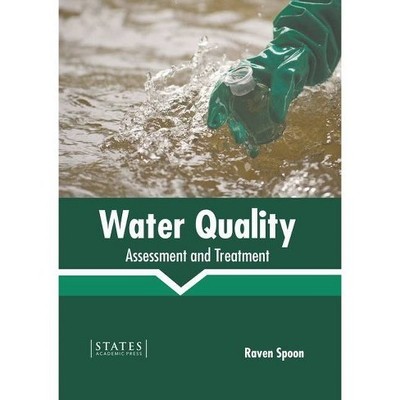
Water Quality
Assessment and Treatment
BY
Raven Spoon
Preface
I am honored to present to you this unique book which encompasses the most up-to-date data in the field. I was extremely pleased to get this opportunity of editing the work of experts from across the globe. I have also written papers in this field and researched the various aspects revolving around the progress of the discipline. I have tried to unify my knowledge along with that of stalwarts from every corner of the world, to produce a text which not only benefits the readers but also facilitates the growth of the field.
Water quality denotes the chemical, physical, and biological characteristics of water, based on the standards of its usage. It varies from place to place, depending on the condition of the source of water it is drawn from and the treatment it receives. The most common standards used to monitor and. assess water quality encompass the health of ecosystems, safety of human contact, and condition of drinking water. Prominent sources of water contamination are sewage releases, natural chemicals and minerals, land use practices, manufacturing processes and malfunctioning water treatment systems. Presence of certain contaminants in drinking water can cause health issues like gastrointestinal diseases, reproductive problems and neurological disorders. This book outlines the treatment and assessment of water quality in detail. The various areas of water management along with the technological progress that have future implications are glanced at. This book can prove to be an essential guide for all those who are interested in this field.
Finally, I would like to thank all the contributing authors for their valuable time and contributions. This book would not have been possible without their efforts. I would also like to thank my friends and family for their constant support.
Table of Contents
Preface
Chapter 1
Ecosystem Approach to Managing Water Quality.
Chapter 2
Metals Toxic Effects in Aquatic Ecosystems: Modulators of Water Quality.
Chapter 3
A Comparative Study of Modified and Unmodified Algae (Pediastrum boryanum) for Removal of Lead, Cadmium and Copper in Contaminated Water
Chapter 4:
Macroinvertebrates and Fishes as Bioindicators of Stream Water Pollution
Chapter 5
Identification of Seawater Quality by Multivariate Statistical Analysis in Xisha Islands, South China Sea.
Chapter 6
Processes and the Resulting Water Quality in the Medium-Size Turawa Storage Reservoir after 60-Year Usage.....
Chapter 7
Calibrating and Validating the Biomonitoring Working Party (BMWP)Index for the Bioassessment of Water Quality in Neotropical Streams
Chapter 8
Impact of Wastewater on Surface Water Quality in Developing Countries.
Chapter 9
Biofloc Technology (BFT): A Tool for Water Quality Management in Aquaculture.
Chapter 10
Integrated Approaches in Water Quality Monitoring for River Health Assessment: Scenario River of Malaysian.
Chapter 11
Modeling Agricultural Land Management to Improve Understanding of Nitrogen Leaching in an Irrigated Mediterranean Area in Southern Turkey.
Chapter 12
Formulating Specific Water Quality Criteria for Lakes: A Malaysian Perspective
***for more please visit the library***
Prep. / Mona Mahmoud



ساحة النقاش